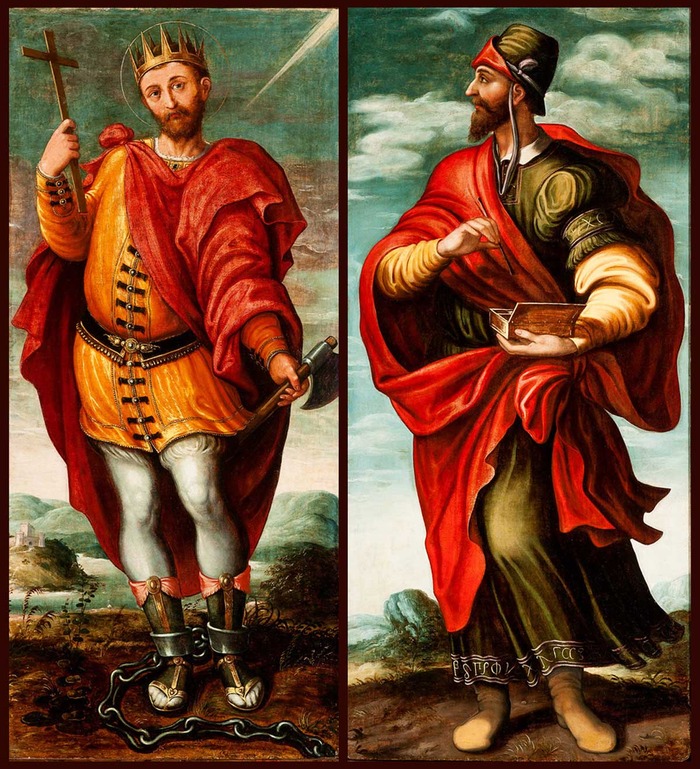Saint Hermenegild and Saint Cosmas

Technical details
Description
Pedro de Campaña, a Flemish painter from the Renaissance, known in Seville, his place of residence for close to thirty years, as Pedro de Campaña, is the creator of the paintings of Saint Hermenegild and Saint Cosmas, dating from 1545-1550. Both paintings exude a sense of monumentality by depicting the saints in the extreme foreground, against a low-lying, idealised landscape, and with Mannerist sophistication and artifice in the postures and gestures they adopt. Saint Hermenegild is elegantly dressed, and he wears a royal crown to represent his self-proclamation as king of the Spanish province of Baetica under the Visigoths, and is depicted with a saint's halo. His right hand holds a cross, the reason for his martyrdom, and his right bears the axe with which he was beheaded in AD 585 for not renouncing Catholicism and refusing to return to the Arianism practised by the Visigoths. Saint Cosmas, a physician who was both charitable and generous to the sick, who died beheaded in AD 395 together with his brother Damian during the Emperor Diocletian's persecution, carries a box with remedies and medicines.


